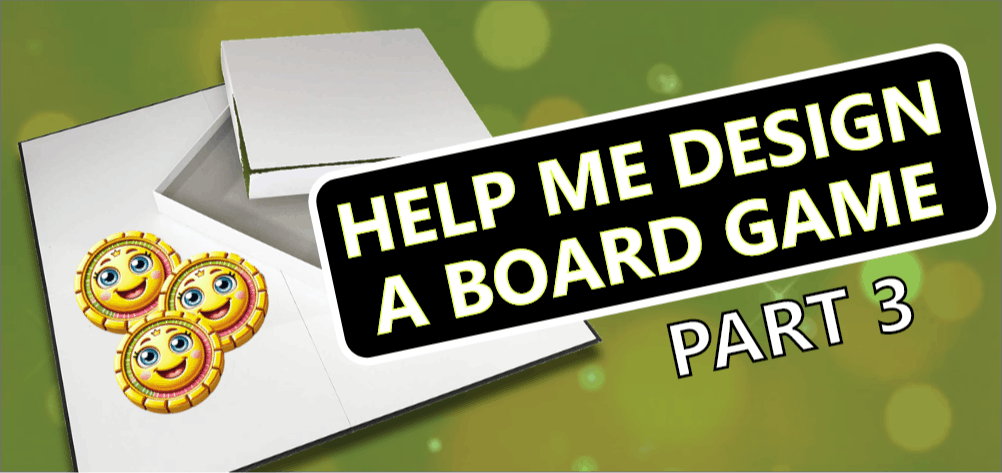



Too Long; Didn't Read
I've been picking away at a new board game for a few years now. I made some progress early on but got stalled with other priorities. I'm now going to push to get the game done. I think it might be a fun experiment to share my design progress here in my newsletter.


Parts 1 & 2
In Part 1 and Part 2 of this board game design experience, we:
- Defined the target player and customer.
- Identified the concept.
- Set the overall goal of the game to be Happiness made of 3 metrics.
- Identified 5 Phases of life — Youth, Education, Career, Family, and Retirement.
- Identified 6 Choices that are repeated — see below.
Nothing is finalized yet, but we have enough to move on to the next stage of the design.
Game design is an iterative process where we might make a tentative decision to allow us to move on to the next stage to see how things play out. Then we can reevaluate and adjust as we go.
Part 3
The next step is to determine how all of the 6 Choices can be integrated and repeated in the gameplay.
Here's what I have come up with:

- Use a game board with a path that players will follow. This is a common "opoly" style game mechanic. This is not my typical go-to preference, but it seems to be the best option here where we have to a number of specific actions.
- The path will have two main types of spaces that are repeated multiple times — (1) The 6 Choices we identified previously; and (2) Events.
- The letters in the sketch above correspond to the 6 Choices (the use of single letters is temporary for the sketch).
- The letters with a bold circle identify the 6 Choices, whereas the other letters are Events related to the 6 Choices. For example, the bold Income space (marked as I) will be where players choose a job or earn money for the job, whereas the non-bold Income space will be an event related to the job, such as earning a big tip or losing a shift.
Progressing
- There will be one pawn to move along the path — for all players. This means all players will progress through the game at the same pace. Consistent pacing is useful in an educational environment and speeds up the gameplay without "waiting for my turn." Remember, that we need time to accomplish learning objectives, so faster gameplay is very helpful.
- Players will take turns rolling the die and moving the pawn. When a player rolls a 6-sided die, they can choose to move the pawn the number of spaces rolled or less. For example, if you roll a 4, you can move 1,2,3, or 4 spaces. This provides some personalization with the pawn movement and can encourage dialog and negotiation among the players.
- The pawn must always stop on a bold circle space. This ensures that important actions are never missed, like earning money for a job, paying housing expenses, etc.
- When the pawn stops on a space, all players must do the same action. The result may be the same or different for each player, allowing for further personalization (and some controlled randomness).
Spaces
- The spaces may be grouped by the 5 Phases of life and money — Youth, Education, Career, Family, and retirement. This allows us to adjust the actions by phase.
- The spaces on the board represent actions that must be taken.
Cards
- The actions will be marked on cards, not on the board. This gives us two benefits: (1) Randomized gameplay for better engagement and repeat play; and (2) more space to explain the action, providing greater clarity without having to refer to the instructions.

Next Steps
The next step will be to design sample cards for the 6 Choices and Events.
Am I on track?
Am I missing something?
Do you have any suggestions?
Should I keep posting about this game?
PS: Please only share ideas if you are willing to allow me or anyone following this discussion to use them for free without any obligation. If you contribute an idea that has a significant influence on the design of my game, I will be pleased to gift you a copy of the game.
如有侵权请联系:admin#unsafe.sh

